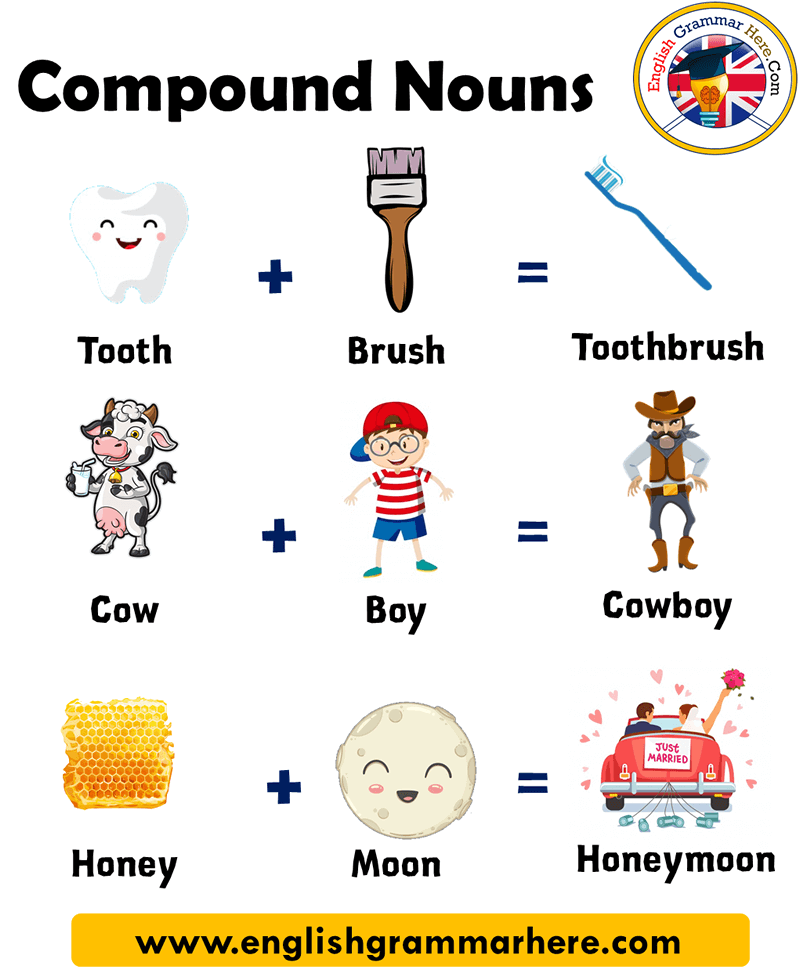
No, the second example is not a mistake on our part. What’s the difference between a compound noun and a noun paired with another word?Ĭertain compound nouns are homophones with two-word phrases. Know the rules for compound nounsĬompound nouns also follow some distinct rules. These are known as open compound nouns, and include the following:Įven though the words are not connected, these are still compound nouns because they communicate distinct concepts when paired as a combination. These are called hyphenated compound nouns, and examples include:Īnd then there are the compound nouns that don’t connect in any way. Other compound nouns are neatly tied together with a hyphen. These are known as closed compound nouns, and examples include: Sometimes, two words are simply smashed together. There are a few different ways to form a compound noun.

Here is a quick, at-a-glance guide to the types of compound nouns: noun A compound noun can be a common noun (fish sticks), a proper noun (Pizza Hut), or an abstract noun (lovesickness). These separate words don’t necessarily have to be nouns themselves all they have to do is communicate a specific person, place, idea, or thing. How to make a compound nounĮvery compound noun is two or more words that come together to form a noun. Software, sunrise, and backpack are but three examples. In fact, they’re so ubiquitous in English that you might not even realize that some of the terms you use every day are compound nouns. It’s a term composed of two or more individual nouns stuck together.Ĭompound nouns are a constant, everyday part of speaking and writing in English.

At first glance, the concept of a compound noun is simple.


 0 kommentar(er)
0 kommentar(er)
